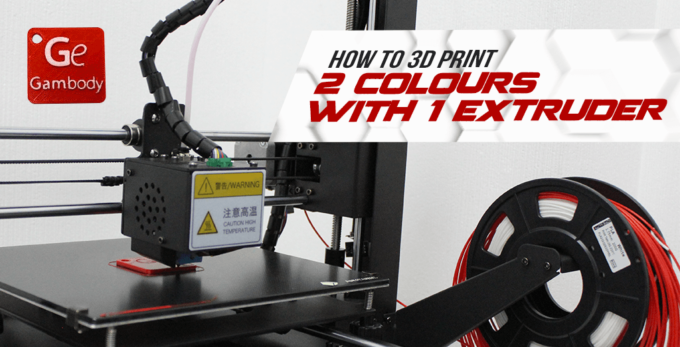Whether you are new to 3D printing or an experienced hobbyist, you probably wish to protect your filament from tangling and drying. PLA and ABS are the two most popular filament types among enthusiasts. Thus, it is best to figure out how to store 3D printer filament (PLA and ABS) at home correctly. This way, you can preserve its properties and simplify the 3D printing process.
The tips below are great for PLA, ABS filament storage. But they also work for PETG protection because this 3D printer filament can also expire when getting exposed to moisture or humidity. Gambody’s guide is perfect for anyone who wishes to prevent the new spool from going bad and avoid the most common 3D printing problems.

How to Store 3D Printer Filament
Even a brand-new spool you have just purchased for your new 3D printing project can suddenly expire.
It might look durable and sturdy at first glance. However, once you begin to work on some trending 3D printed toys or other models, you might experience poor 3D print quality. It can happen due to moisture absorbed by the filament, direct sunlight exposure or wrong storage which causes corruption.
The best way to store filament is to:
- Use a desiccant treated container
- Use vacuum bags
- Use an actively dried container
- Make a DIY dry box
Why store PLA, PETG, ABS filament:
- To avoid moisture
- To keep away from humidity
- To not let it swell
- To protect spools from direct sunlight
- To prevent the filament from tangling
When exposed to and damaged by moisture, humidity, sunlight, the 3D printer filament causes unpleasant issues. For example, it can swell too bad to damage your printing machine, make you replace broken parts which can be expensive.
Besides, the damaged filament can affect the quality of your print, leading to poorly 3D printed toys, figurines and statues with bubbles and spaghetti look. Wet and re-dried filament also loses its tensile strength and creates weak 3D prints.
How to Keep Filament Dry: 5 Solutions
Here are some ideas of PLA, PETG, ABS filament storage boxes you can use.
1. PLA Filament Storage Box
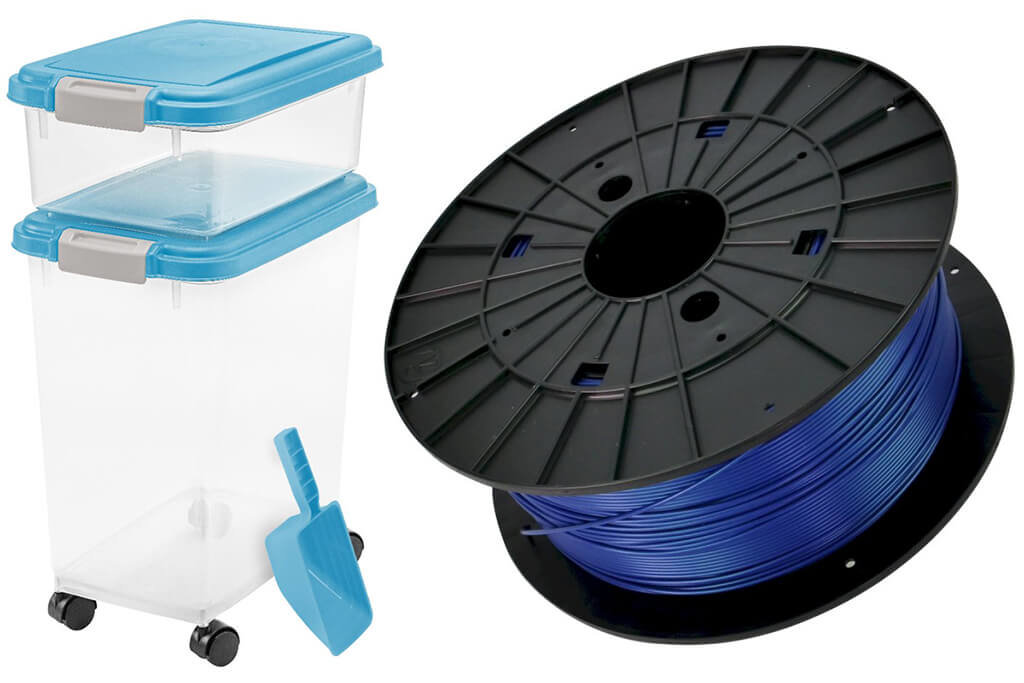
The most convenient way to protect your spools from air humidity is to store them in a box. If you keep the filament in the air, it will absorb moisture over time. Thus, it is better to use a storage box.
You can go with an airtight pet food container. Only make sure that your chosen box stays dry so that the stored product avoids contact with humid air.
Choose boxes that are about 40 cm (15 inches) x 30 cm (12 inches) or bigger. This way you can store spools that are up to 20 cm (8 inches) in diameter.
2. Vacuum Bags as ABS Filament Storage
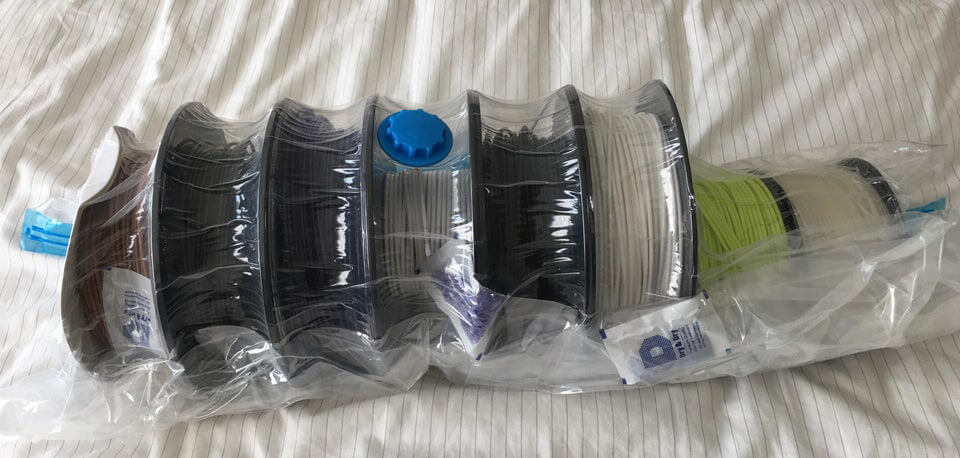
Using silicon packets and vacuum-sealed bags for storing your spools is a neat idea. These products are affordable and available in multiple sizes.
It is best to select bags or packages that can suck the air out after you place the 3D printer filament inside. It is also great to choose double-zipper bags because they offer double-protection.
3. Dry Box
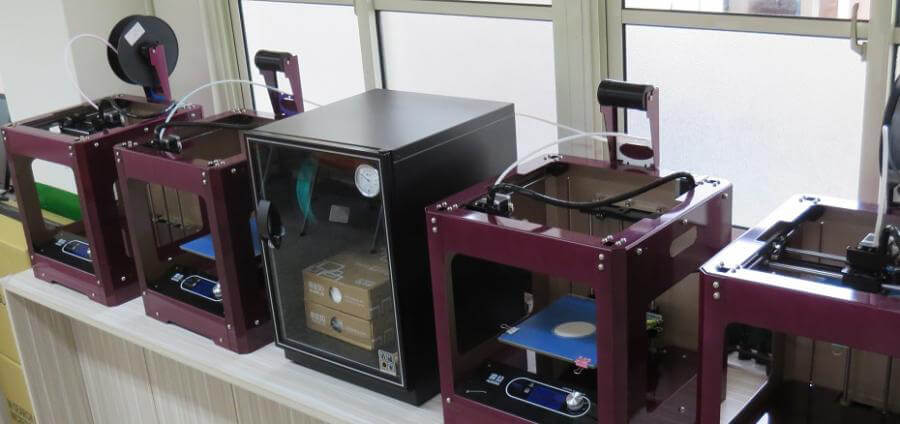
Another solution for filament storage is using dry boxes. These cabinets often arrive with a dehumidifier system. It works electronically.
The system keeps dehumidifying the air out of the box. You plug it in, and it starts taking care of your 3D printer filament.
Unlike regular storage containers, dry boxes are more expensive. But if you have many spools for future projects, it is better to protect them from humidity.
4. Renewable Dehumidifiers
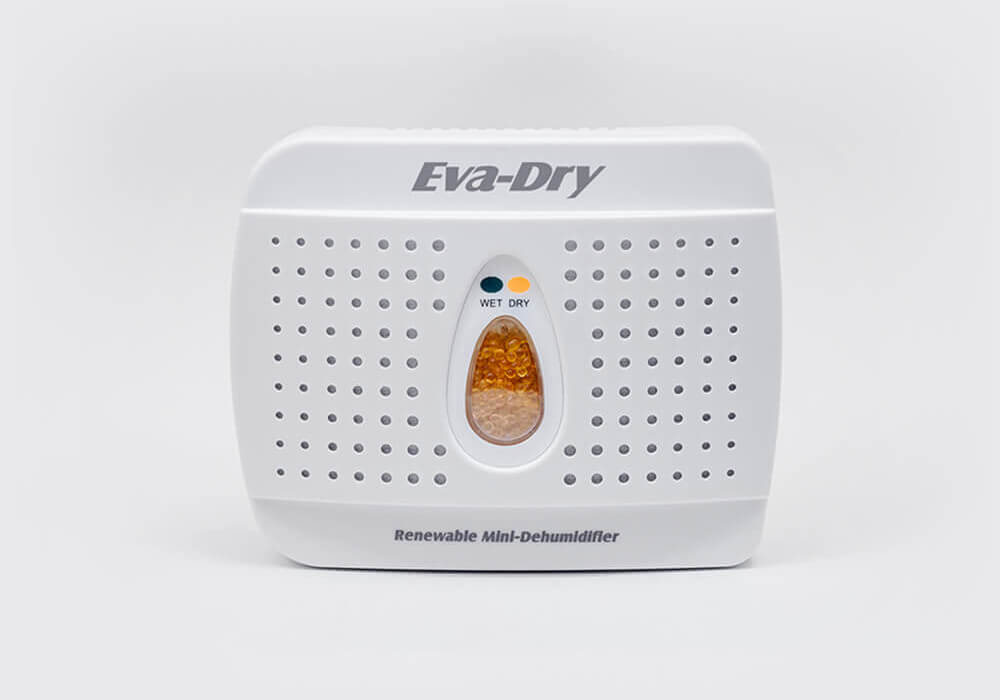
Enthusiasts and hobbyists who enjoy 3D printing and prefer storing their filament in regular storage boxes can place a dehumidifier inside. Such protection reduces air humidity, and it works without any cords or batteries.
Dehumidifiers contain silica gel beads. These mini devices need to be plugged into a power outlet once a month to “charge” gel beads. Such a renewable solution is perfect and affordable.
5. Silica Gel Beads
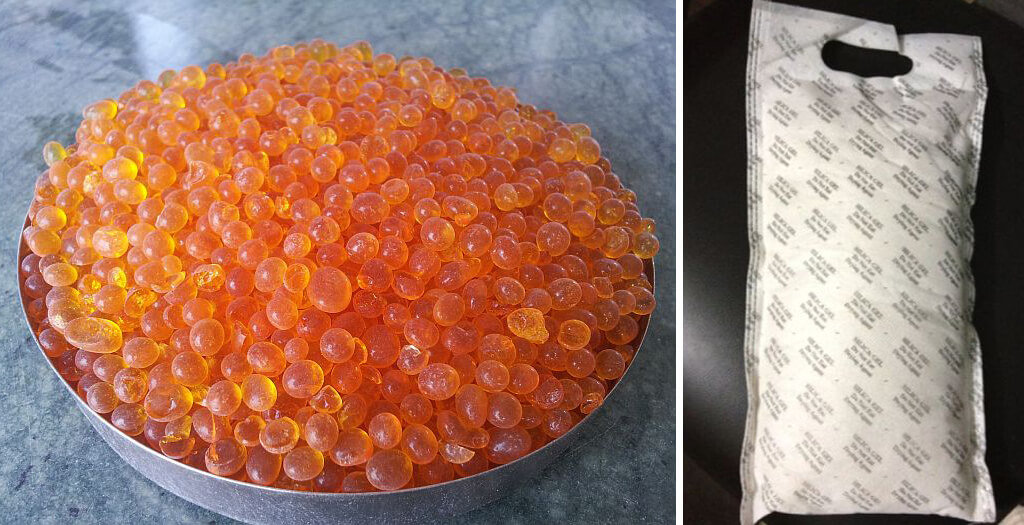
If you use a regular vacuum bag or silicon package, it is a smart decision to place some silica gel beads inside.
These gel beads come in mini-packets with some real food products and consumer goods. Do not throw them away because they can protect your filament.
The silica gel beads are perfect at absorbing extra moisture. They help to keep the air dry inside a box, and they are affordable. They can save you money since there is no need to purchase a dehumidifier if you preserve gel beads from your regular household purchases.
How to Keep Filament from Tangling
Getting tangles in the 3D printer filament during extrusion is an upset situation. But it is caused by users being not careful with their spools or by incorrect storage. Luckily, it is possible to fix the problem and untangle the knot.
It is necessary to pull the filament loop over the spool’s edge. Repeat this procedure until you only see a single path of filament instead of three different paths coming off your spool. Once you manage to solve the issue, you can rewind 3D printer filament and untangle the knot.
There is one advice on how to keep the filament from tangling. You should never lose the end of it, keep it in spools and release one end only when it goes in the extruder.
How to Dry Filament in Oven
Well, if your filament got wet before you learned how to store it correctly, there is a way to dry it in the oven. It is an affordable solution to enthusiasts who wish to 3D print Halloween figurines or impressive 3D printing ships, or other models, but do not want to purchase a new spool instead of the one saturated in moisture.
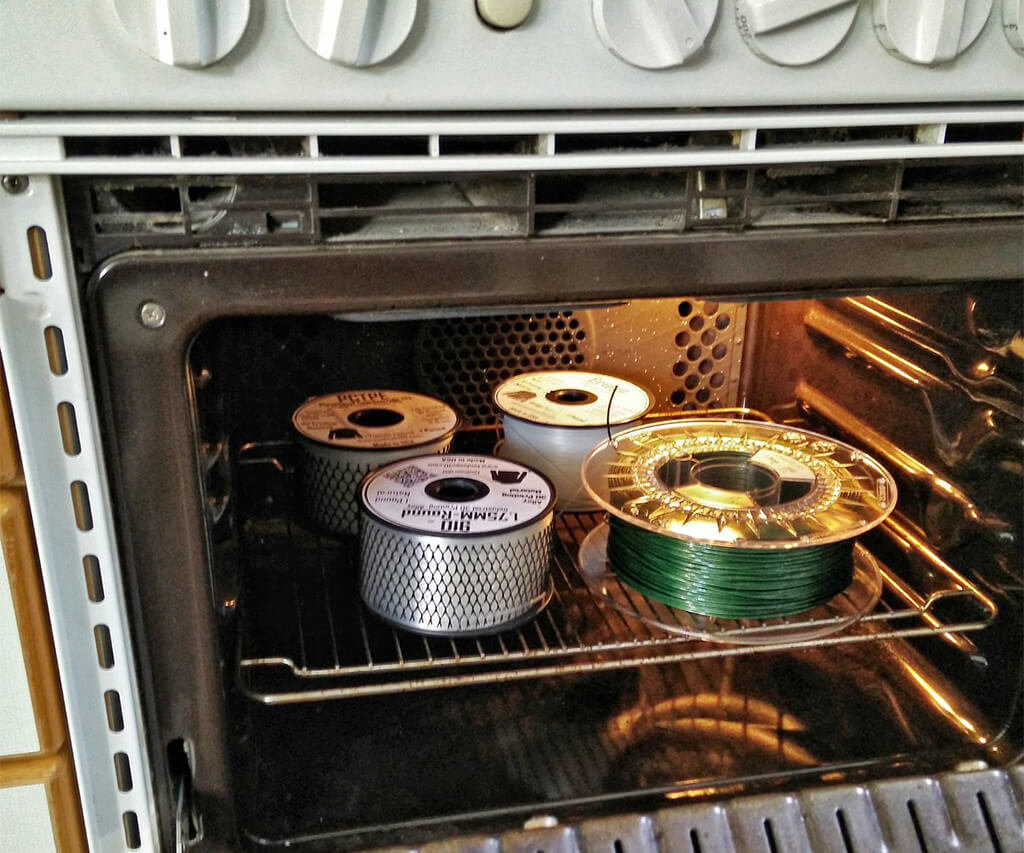
It is best to dry the 3D printer filament (that is wet) in a fan oven. Before you insert the spool or spools in the oven, double-check the glass transition temperature (Tg) for your type of material.
You can leave filaments with the glass transition temperature of 80-100 °C (176-212°F), such as ABS, in the oven at 60-70 °C (140-158 °F) for an hour.
PLA’s Tg is around 60 °C (140 °F), so you can dry it in the oven at low heat. Use the minimum heat settings of about 30 °C (86 °F) and let it dry for one-two hours or a bit longer.
Spools with nylon can be dried in the oven at 60-80 °C (140-176 °F).
If you do not wish to use the oven for drying, you can go with a food dehydrator instead.
Bonus Tips & Tricks
When it comes to keeping the spools dry and ready-for-3D-printing, it is best to mention the filament storage temperature. It also plays a significant role in preserving the best quality of plastic and other material for 3D printed figurines, statues and toys.
Make sure you keep an eye on the correct temperature when storing your spools:
- PLA filament storage temperature – 10-30 °C (50-86 °F)
- ABS filament storage temperature – 15-25 °C (59-77 °F)
- PVA filament storage temperature – 0-30 °C (32 -86 °F)
- PETG filament storage temperature – 8-15 °C (46-59 °F)
Anyways, you can always find a cool dry place on your shelf (away from the sunlight) and store your spools in air-tight boxes there.
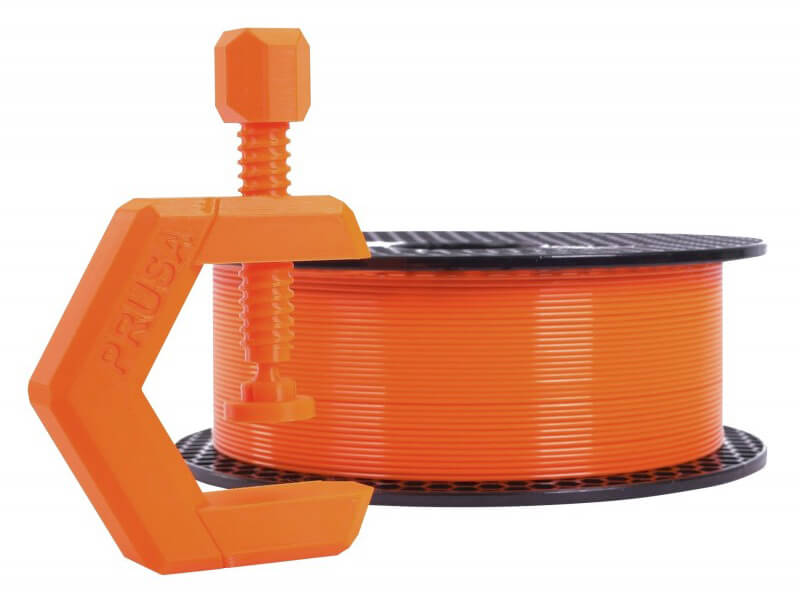
If you prefer vacuum bags or other packages for storage, it is a brilliant idea to get some filament clips. They can prevent the sharp end-points of your filament from making holes in the bags. Holes will expose the product to moisture. Thus, having clips is a must.
Anyways, you can choose any method of how to store 3D printer filament at home. Your goal is to protect spools from tangling, prevent their exposure to humidity and preserve the correct storage temperature. This way, your 3D printing models will look precise and last longer, and Gambody Facebook community will be happy to see photos of your masterpieces.

